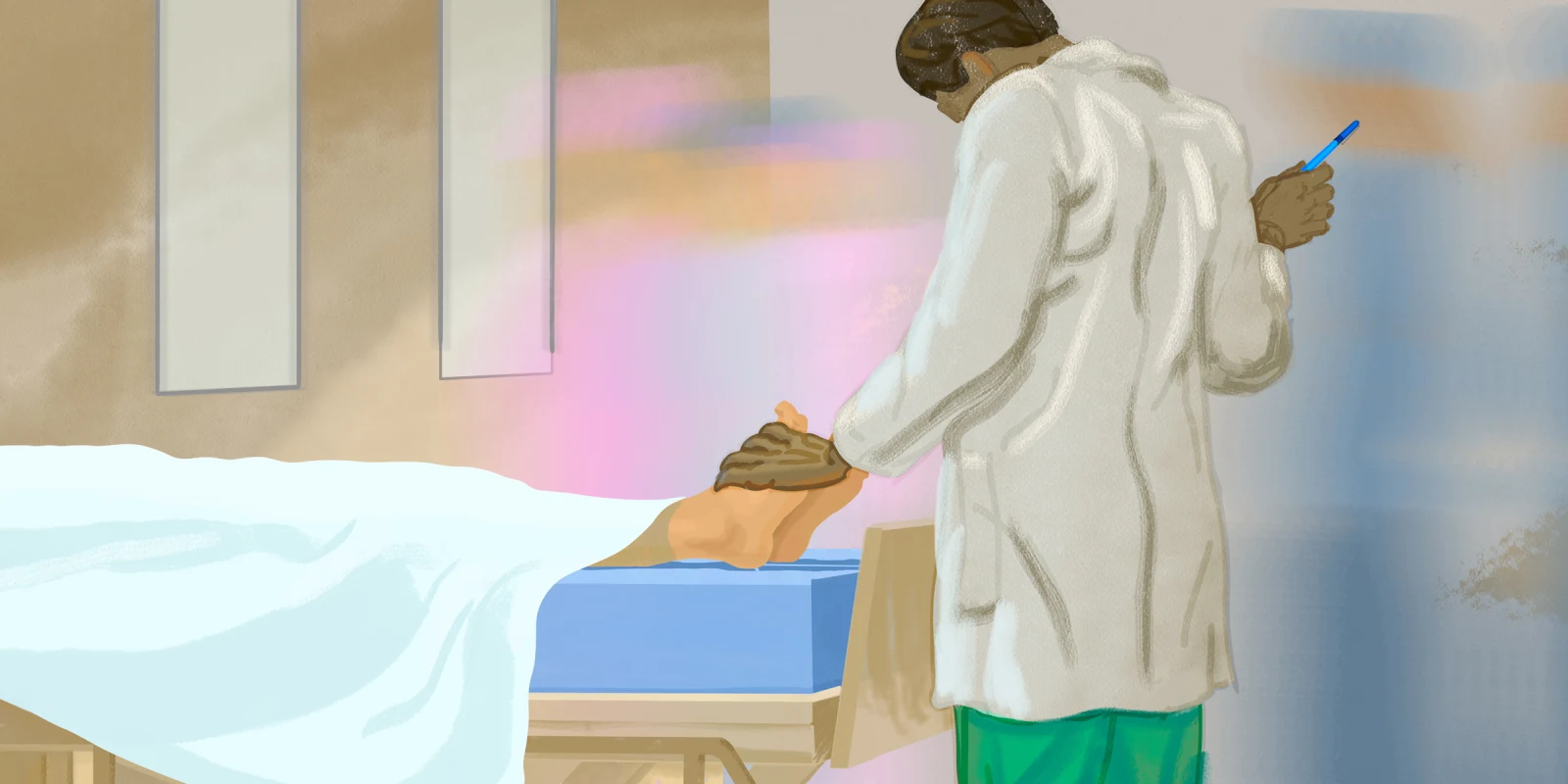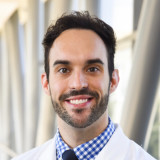When I saw her, the room was almost too bright. Sunlight shone through the small window in her room, and the beams lit the blankets on her bed. Stained tape secured her tube and stuck to strands of her matted gray hair. Her husband sat next to her and did a crossword puzzle, as classical piano played from the television. Beeping alarms in neighboring rooms, shuffled footsteps, and frantic hallway conversations swirled together in a soft cacophony. But he never looked up from the page.
I peered in to check her vitals, and her story snuck up on me. She had had an enormous intracerebral hemorrhage a few days prior. She was exercising with her husband, and a severe headache left her dizzy and confused. She stepped off the treadmill and lost consciousness. I tried to picture it, unintentionally conflating the transfer notes’ description with my own memories of rickety treadmills in crowded gyms.
My first month as a neurosurgery intern taxed my senses like nothing had before. But even through the fog of countless consults, emergent procedures, and sleepless nights, vivid images of many patients remain in my memory. I still feel the cold door handles. I still smell the stale mix of bleach and soiled linens. But now that I’m a few years removed from the perpetual chaos of intern year, my recent call nights lack this clarity of memory. Undoubtedly, I’ve entered many new scenes. But they are gray and faded.
“Middle-aged man, temporal mass.”
“Lower back pain, prevented her from ambulating around her house.”
“Collapsed at home, subarachnoid hemorrhage.”
Sometimes, that’s all that’s left. After I evaluate a patient and provide a recommendation, I often remember relatively little. Tones of voice and facial expressions have faded. The rooms have no distinct smell or lighting. Standard demographics, exam findings, and imaging results remain, and they rightly guide treatment planning. After walking by thousands of rooms and peering into thousands of windows, many of the early scenes stick, but many of the recent ones do not.
Perhaps this process reflects maturity in clinical acumen. The early years of medical school are spent in calm and ordered lecture halls, but practicing medicine requires raw confrontation with the stark realities of human frailty. Learning opportunities present themselves as vivid sensory experiences. The shrieks of delirious ICU patients, pulses of arterial blood in the OR, and dirty, gaping extremity wounds in the trauma bay can be jarring for students new to the wards. But as we fully absorb every detail, we heighten our attention, and our immersion in the moment bestows lessons that we bring to any encounter that follows. However, as our education progresses, we become more confident, and our experience takes precedence. Our focus falls on the clinically relevant details, and while treatment plans become clear and refined, our experience blinds us. Other details, like the puzzle her husband did at her bedside, are gone forever.
“Imagination is better than a sharp instrument,” writes Mary Oliver, “to pay attention, this is our endless and proper work.” As technology evolves, “sharp instruments” abound, and pattern recognition can supersede observation. Unless we “pay attention” to the nuances of our landscape, to the expressions, intonations, colors, and sounds, we become passive bystanders. We charge forward in pursuit of a solution, and paradoxically, we lose agency. But the nuances reveal our strengths and our vulnerabilities. When we recognize how the most subtle details can shape our experience, we can fully engage with our patients, rather than treat them as problems to be solved.
Share a detail from a patient experience that has stayed with you throughout your career.
James Caruso is a neurosurgery resident at UT Southwestern Medical Center in Dallas, TX. He plans to specialize in complex spine surgery, and his research focuses on elucidating the molecular mechanisms driving chronic neck and back pain. He is a 2021-2022 Doximity Op-Med Fellow.
All names and identifying information have been modified to protect patient privacy.
Illustration by Jennifer Bogartz







